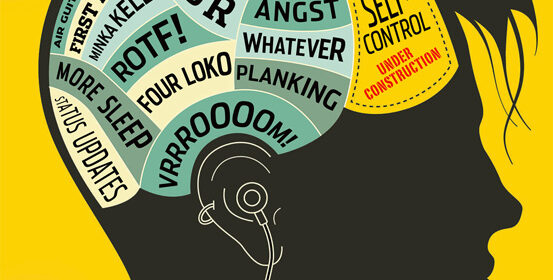Alcohol and the Adolescent Brain: Use It or Lose It

JARED SOLOVEI – The human mind is complex, to say the least. So much so that it is possible for a person to be compelled towards two completely opposite courses of action simultaneously. A prime example of this conflict occurs when people must choose between instant and delayed gratification. These binary crossroads are instrumental in human development and take countless forms: whether to spend or save, to sleep another hour or get up for class, to get drunk again this weekend or avoid the potential consequences of ethanol on the human body.
We’ve all been told that alcohol is bad for us, but what exactly makes it so harmful? Besides the immediate adverse effects, such as dehydration and impaired decision making, long-term consequences include organ damage in places like the heart and liver. However, none of these factors will constitute the subject of today’s inquiry. Instead, the focus will lie on the battleground in which the aforementioned internal power struggles take place: the brain.
It doesn’t take a degree in neuroscience to figure out that alcohol affects the brain. The fact that it alters mood and behavior is a dead giveaway that something is going on up there. However, the mechanisms by which alcohol accomplishes these neural alterations, and even more so its long-term consequences, are only partially known and remain the focus of extensive research to date. Simply put, ethyl-alcohol (or just alcohol) is a neurotoxin and depressant that both damages cells and slows activity in the central nervous system. After entering the bloodstream, alcohol makes its way to the brain where it attaches to neurons that normally bind to gamma-Aminobutyric acid (GABA). When GABA attaches to this group of neurons it inhibits their function. Thus, when alcohol binds to these same receptors it causes neurons to stop firing. This mechanism is believed to be responsible for the sedation, reduced inhibition, and motor difficulties that accompany drunkenness (Comer & Comer, 2017). So what happens to a person who chooses to repeatedly subject their brain to this process over the course of many years?
To answer this question one must consult the body of scientific research designed specifically for such a purpose. One avenue of inquiry taken by scientists is studying our closest relatives: primates. The Rhesus macaques has been widely studied in an attempt to draw conclusions about our own inner workings, specifically in regards to alcohol consumption. One study that measured alcohol’s effect on brain development in the Rhesus monkey during late adolescence and early adulthood uncovered and quantified a reduction in total brain volume. They found that every year, brain development is reduced by 0.25 mL per gram for every kilogram of daily ethanol intake. While quantifying the alcohol-induced reduction in brain development is certainly a great feat; this information is more valuable in the hands of researchers and doctors. So what should the laymen extrapolate from these findings? Well, they should understand that there is concrete evidence that links alcohol to a reduction in brain development, at least in Rhesus macaques. But perhaps the results of this study are not enough. After all, those are monkeys, and monkeys are not people.
Two longitudinal studies, one looking at 134 adolescents and the other examining a total 757 young adults, both saw an accelerated reduction in grey matter and attenuated white matter growth in comparison to their respective control groups. These studies suggest that, in humans, the trajectory of brain development is noticeably altered by alcohol consumption. While this may come as a surprise to some, this information is by no means new or entirely ground-breaking. In fact, the studies mentioned here are only a few droplets in a sea of literature highlighting the dangers of something you can purchase in an unlimited quantity nearly everywhere in the world.
So, after reading this should everyone live like monks, never indulging in an adult beverage, or anything bad for that matter? Well ideally yes. But unless you are a perfect stoic who has achieved total self mastery, this is easier said than done. For most of us, harm reduction is key. The more we can say “no” to the siren song of instant gratification, especially when it comes to things proven harmful, the greater our delayed bounty will be.
References
Comer, R. J., & Comer, J. S. (2017). Abnormal psychology: 10th edition. Worth Publishers.
Copy Editor: Vetri Maduraiveeran
Photography Source: https://www.wsj.com/articles/SB10001424052970203806504577181351486558984
